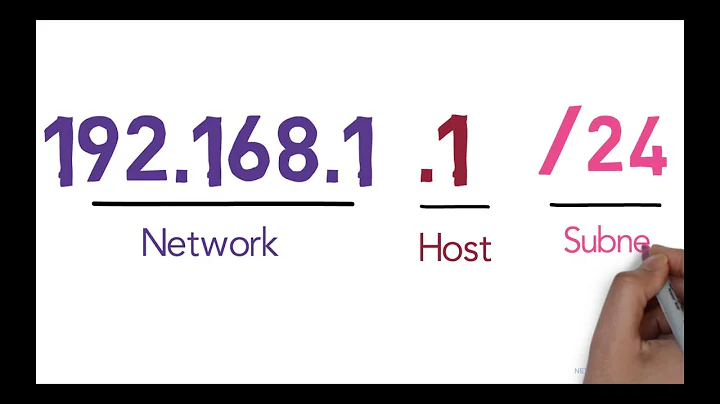How to get 192.168.3.2 to successfully ping 192.168.2.3
Routing occurs at layer 3. When a host on the 192.168.2.0/25 network pings a host on the 192.168.3.0/24 network it should send the traffic to 192.168.2.1 (assuming that all hosts on the 192.168.2.0/25 network have 192.168.2.1 configured as their Default Gateway and that they don't have a specific route in their routing table for the 192.168.3.0/24 network via 192.168.2.63). 192.168.2.1 then should issue an ICMP redirect (since it has a specific route to 192.168.3.0 via 192.168.2.63) which then sends that traffic to 192.168.2.63. 192.168.2.63 then sends the traffic to the appropriate host on 192.168.3.0/24 (after ARPing for the host). The host on 192.168.3.0/24 then responds to the traffic by sending the response to it's Default Gateway (which is 192.168.3.1) and the traffic travels back to the 192.168.2.0/25 network. If the hosts on the 192.168.3.0/24 network weren't configured with the correct DG and if the Cisco router wasn't configured correctly then the return traffic to the ping initiated by the 192.168.2.0/25 host would never make it back, which leaves me stumped as to why it doesn't work for pings initiated by the 192.168.3.0/24 hosts. The Default Gateway on the Cisco router shouldn't come into play since it's directly connected to both networks and therefore knows how to route traffic to and from both networks.
What do you have set for the DG on the 192.168.3.0/24 hosts? What about the 192.168.2.0/25 hosts?
Can you post the routing table from one of the hosts on each network?
What do you get if you run a trace route from a 192.168.3.0/24 host to a 192.168.2.0/25 host?
How about the reverse?
Related videos on Youtube
Lorin S.
Updated on September 18, 2022Comments
-
Lorin S. over 1 year
With the layout described below, the following is true:
- either router can ping any host on either subnet
- 192.168.2.0/25 hosts can ping (and ssh to) 192.168.3.0/24 hosts
but
- 192.168.3.0/24 hosts cannot ping hosts on 192.168.2.0/25
What'd I do wrong?
I have the following layout:

Linux Router
ip route:192.168.2.0/25 dev bond0 proto kernel scope link src 192.168.2.1 a.b.c.d/24 dev eth0 proto kernel scope link src a.b.c.e ### Internet upstream 192.168.3.0/24 via 192.168.2.63 dev bond0 169.254.0.0/16 dev eth0 scope link default via a.b.c.d dev eth0Cisco Router
show ip route:router-2600#show ip route 192.168.2.0/25 is subnetted, 1 subnets C 192.168.2.0 is directly connected, FastEthernet0/0 C 192.168.3.0/24 is directly connected, FastEthernet1/0 S* 0.0.0.0/0 [1/0] via 192.168.2.1(An iptables firewall is configured on the Linux router but the failure continues whether the firewall is active or not)
-
 NickW over 10 yearswho is 192.168.2.63?
NickW over 10 yearswho is 192.168.2.63? -
Lorin S. over 10 years.63 is the Cisco Router's f0/0 interface
-
 NickW over 10 years2.0/24 is directly connected to both? Which of the two boxes is the default gateway?
NickW over 10 years2.0/24 is directly connected to both? Which of the two boxes is the default gateway? -
Lorin S. over 10 yearsThe 192.168.2.1 is
-
Lorin S. over 10 yearsThe physical layout is not set in stone either.. I am attempting to segment a portion of traffic and am laying out the hardware how I believe it should be. Comments and feedback on layout are greatly welcomed.
-
 NickW over 10 yearsIf the linux box is the GW for the 2.0 network, the cisco needs to know that and route through it accordingly. For the moment, traffic can come from either the cisco or the linux box from the 3.0 network, but will then be sent back through the linux box. This isn't a good idea, and will quite probably cause problems. How you resolve this is up to you, but you need to make one of the two into the default that the other uses to access the network.
NickW over 10 yearsIf the linux box is the GW for the 2.0 network, the cisco needs to know that and route through it accordingly. For the moment, traffic can come from either the cisco or the linux box from the 3.0 network, but will then be sent back through the linux box. This isn't a good idea, and will quite probably cause problems. How you resolve this is up to you, but you need to make one of the two into the default that the other uses to access the network. -
Lorin S. over 10 yearsI've noticed long delays accessing the 192.168.3.0 hosts. This is probably due to what you described.
-
Lorin S. over 10 yearsSo I am attempting to do what you suggested by putting the following default route on the Cisco router: ip route 0.0.0.0 0.0.0.0 192.168.2.1 .... How should I accurately describe the 192.168.2.1 default gateway there?
-
 NickW over 10 yearsThe problem is primarily that both the cisco and the linux box are in the 2.0/25 network. Unfortunately, the proxy I'm behind won't allow me to see your network diagram, so I can't see what you intend these networks to do. 1 solution might be to set up a 192.168.4.0/29 between the cisco and the linux network, then the cisco would control 3.0/24 traffic, the linux one would control 2.0/25. The cisco could be 192.168.4.1, the linux box 192.4.2, the linux box would have a route 19.168.3.0/24 via 192.168.4.1, the cisco 192.168.2.0/25 via 192.168.4.2 and 0.0.0.0 via 192.168.4.2. HTH
NickW over 10 yearsThe problem is primarily that both the cisco and the linux box are in the 2.0/25 network. Unfortunately, the proxy I'm behind won't allow me to see your network diagram, so I can't see what you intend these networks to do. 1 solution might be to set up a 192.168.4.0/29 between the cisco and the linux network, then the cisco would control 3.0/24 traffic, the linux one would control 2.0/25. The cisco could be 192.168.4.1, the linux box 192.4.2, the linux box would have a route 19.168.3.0/24 via 192.168.4.1, the cisco 192.168.2.0/25 via 192.168.4.2 and 0.0.0.0 via 192.168.4.2. HTH




